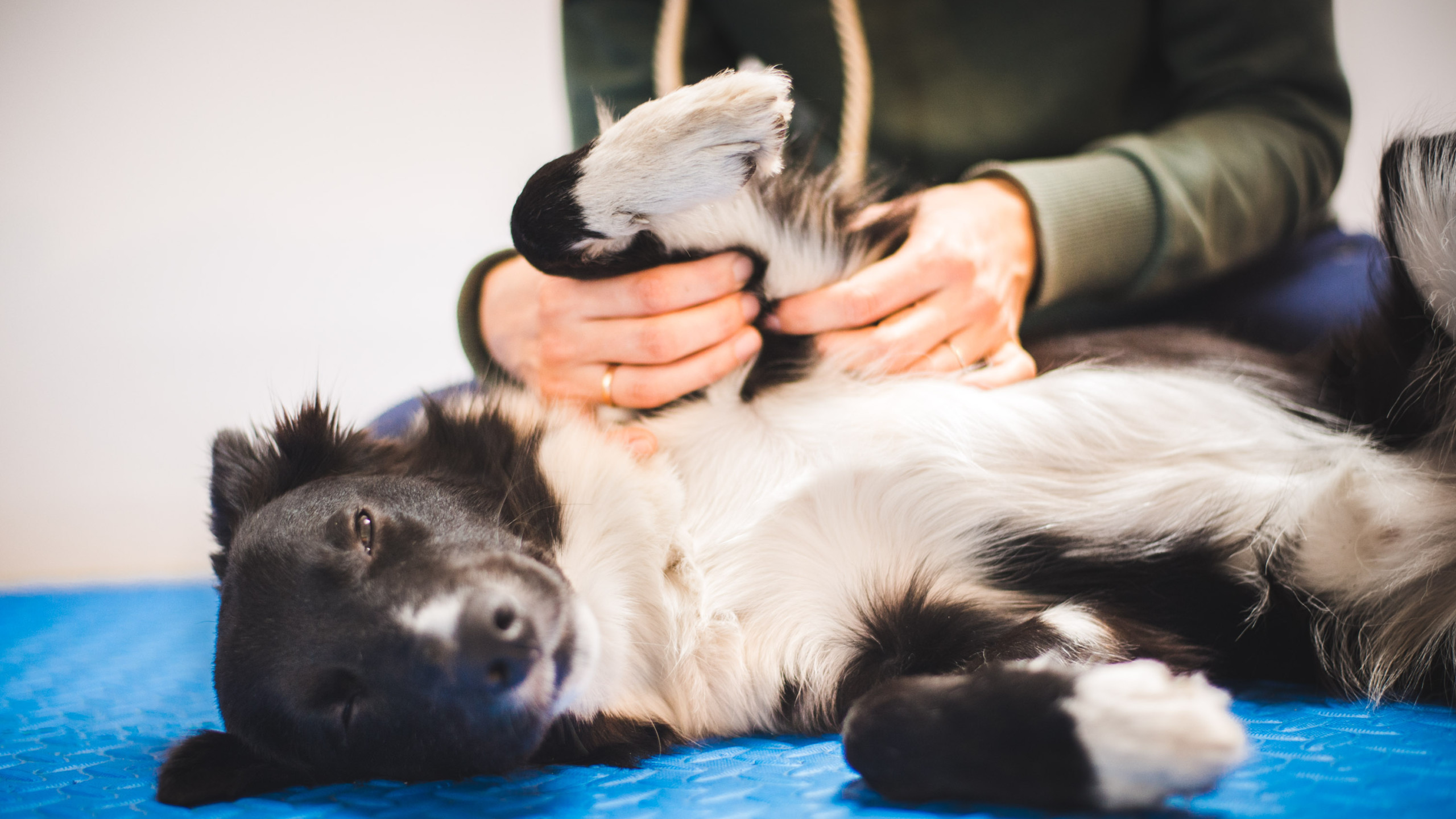Muller Veterinary Hospital, Walnut Creek, CA
Veterinary medicine has come a long way with development of physical rehabilitation therapies. Many modalities of treatment utilized in human physical therapy have been extrapolated for use in veterinary physical rehabilitation. Injured and post-surgical dogs can benefit from physical rehabilitation, as can older dogs that are slowing down from osteoarthritis, obesity, or other chronic illnesses. Competition dogs, as well as police and working dogs, can be returned to work faster and more safely having completed physical rehabilitation.
Once your dog has been evaluated by a trained veterinary rehabilitation professional, goals are set and a multimodal therapeutic plan is created. Goals might include core and limb strengthening, enhancing mobility, improving balance and reducing the compensatory burden on other parts of your dog’s body. Above all else, good pain control is paramount to a successful rehabilitation protocol.
There are many rehabilitation therapies from which your dog might benefit, including hydrotherapy in an underwater treadmill. Water is an ideal setting for a debilitated pet to exercise because it provides a warm, buoyant environment in which to walk. Dogs reap both physical and emotional benefits from this useful therapy.
Muscle pain can be effectively treated with therapeutic laser treatments in a way that medications cannot match. Other well-established veterinary therapies include acupuncture and chiropractic care, and they continue to be foundations in helping debilitated pets recover. Also integrated into thorough rehabilitation protocols are cryotherapy, or icing, and deep heat ultrasound, which promote comfort and healing of damaged tissues. Dogs can also benefit greatly from a professional massage to help relax sore muscles and improve circulation.
An at-home exercise program is an integral part of your dog’s recovery and can be a fun activity for you and your dog to do together. Returning your dog to a comfortable and active lifestyle is a big responsibility and one that should be undertaken by a trained and experienced veterinarian. There are two resources to help interested pet parents find reputable centers that can provide physical rehabilitation therapies. The University of Tennessee developed the first veterinary curriculum for physical rehabilitation in dogs and horses, and a private educational institute soon followed in Florida.







